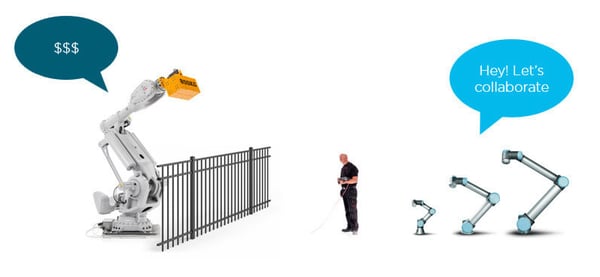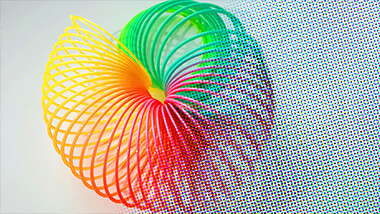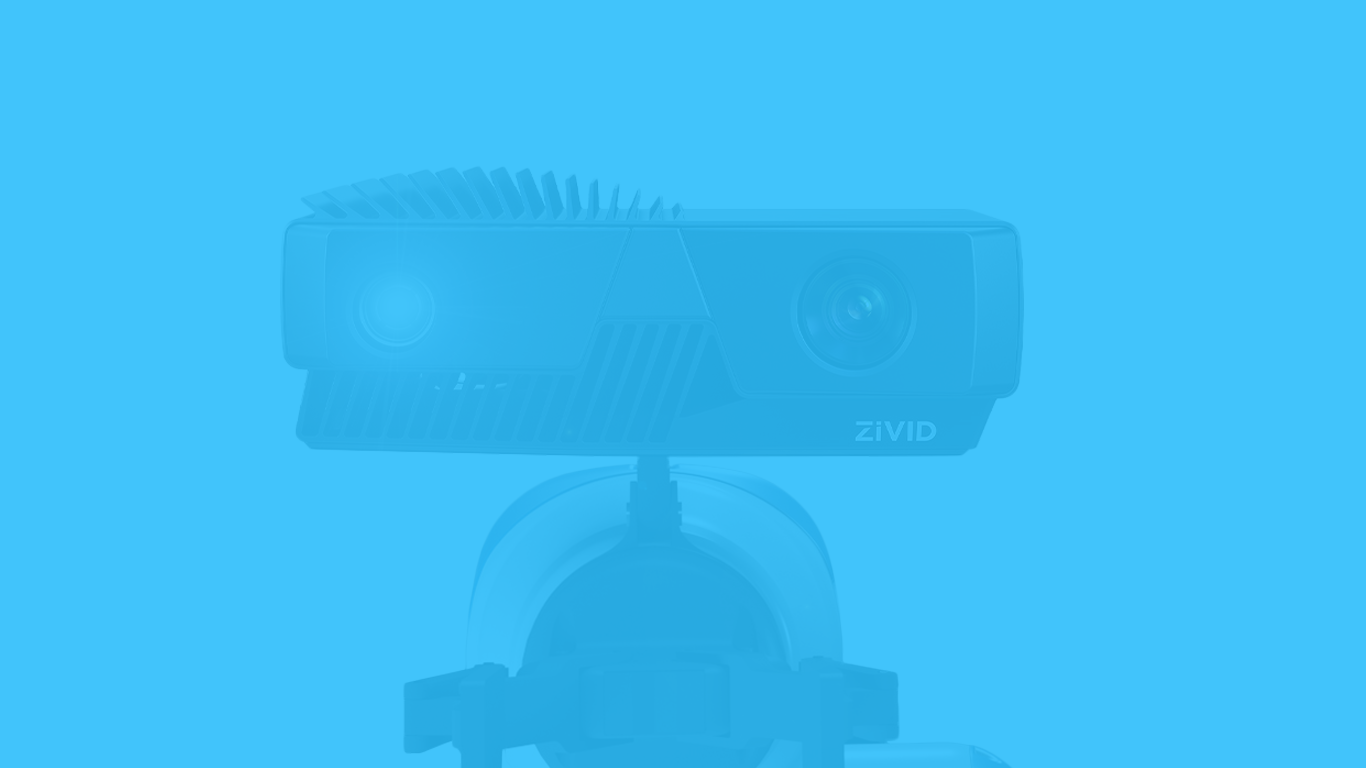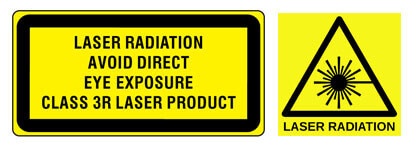Collaborative 3D Cameras – Safe, Flexible, Precise and Easy to Use
Imagine a robot arm more than 2 meters in length moving a massive piece of metal at superhuman speed.
A terrifying, but powerful picture of industrial robots at work, and one that makes you want to view it at a safe distance or from behind a cage…

Industrial robots have long been considered aggressive and dangerous creatures. Near humans, their impressive power and speed must be controlled, and they are caged and safeguarded most of the time. With the accelerating convergence of digital and analog worlds, the lines between robots and humans are blurring, and a new, friendlier breed of robot are appearing on factory floors. Enter the collaborative robots (‘cobots’) - the ‘new kids on the block.’
Earlier this year, at Automatica, it was clear that cobots were a big deal, with practically every major robot vendor displaying their models at the fair.
Market research firms predict growth rates (CAGR) in the cobot market of over 50% resulting in a market size of about $12B in 2025
Seeing is believing
Not only are robots becoming safer and more usable, more capable and aware of their surroundings, they now also see better. With advancements in 3D vision technology, robots now work together with humans in a more human-like way.
At VISION in Stuttgart 2018, lots of exciting new technologies were on display, and for a seasoned machine vision researcher like myself, the exhibition floor was one of the absolute highlights of the show.
Even if robot vision is just a subset of the broader field of machine vision, robot vision in the form of 3D cameras was a major attraction and gained much attention. Cameras now come in all shapes and sizes, and 3D is gradually taking over 2D in the machine vision space. Several new cameras were introduced, including the Zivid One Plus 3D camera portfolio.
We’re at a point where we know that robots can adapt better to context and do more varied work with human-like vision, but there are still a few questions around 3D cameras in collaborative environments.
Are 3D cameras ready for collaborative work?
Have they gone through the same transformation as robots, or are they still confined to secured spaces at a safe distance from human operators?
What is a collaborative 3D camera?
A new category of machine vision cameras is emerging, that of collaborative 3D cameras. This class of technology has some unique qualities and requirements. It needs to be simple and easy to use, adaptable and flexible, reliable, with high precision – and of course safe.
Collaborative safety
First and foremost, being "collaborative" is inherently safe, and applies equally to both robots and their eyes, the cameras. Already defined robot safety guidelines enable the potentially enormous market for collaborative robots.
However, what does safety mean for 3D cameras?
Most 3D cameras are active cameras, relying on a light source to capture the underlying data. Active lighting is crucial to get the required precision and accuracy, but also a source for potential safety issues.
A popular choice of light source is the laser. This is especially prevalent in conveyor belt applications where a laser line and a camera together achieve triangulation. Several 3D scanners and cameras also use this light source, which is perfectly fine if the laser is safe. Sometimes that’s not the case.
In laser safety, there are several classes based primarily on output power and wavelength. The three top categories are:
- Safe
Class 1 and 2 lasers are in most aspects considered safe. - Borderline
Class IIIa / 3R lasers are in the “grey zone”; they can be safe in some scenarios but can also be dangerous. Here you need to be extra careful. - Dangerous
Class IIIb / 3B and 4 are not safe, and protective gear is needed. Class 4 laser are dangerous, with for instance the potential for permanent eye damage.
Since many 3D cameras and scanners make use of class IIIa and 3R lasers, let’s focus on the Borderline category.
Class 3R (IIIa) visible-light lasers are considered safe for unintentional eye exposure because a person will normally turn away or blink to avoid the bright light. Do NOT deliberately look into or stare into the beam -- this can cause injury to the retina in the back of the eye. Be aware of beam reflections off glass and shiny surfaces. Depending on the surface, the reflected beam could be about as strong and as focused as a direct beam.”
Warning: This device is Laser class 3R product. Do not look into the direct laser light! Use of protective eyeglasses is recommended.”
Consequently, class 3A/R is not 100% safe. If you work close to the laser source, in our context the 3D camera, this is often the case. In collaborative tasks such as picking and machine tending for example, with blank and reflective target objects, use of protective eyeglasses is therefore recommended.
Laser safety also introduces additional challenges. Will the ‘new kid on the block’ be accepted and included in the workplace? In many jurisdictions, organizations that operate lasers are required to appoint a laser safety officer (LSO) who is responsible for ensuring that all workers follow safety regulations. A scenario where your new digital friend approaches you with a yellow warning sign is not uncommon:
True collaborative 3D cameras
As described above, the use of certain lasers in a collaborative scenario violates the principle of ‘inherently safe’ and will often not align with the definition of a "collaborative 3D camera". We believe this poses a challenge for real-world scenarios and true adoption.
This insight drives one of the critical design considerations at Zivid. All our cameras use a safe white light source for illumination which is the best choice for a broad variety of industrial automation applications, including those in a collaborative environment.
Zivid cameras produce high-quality point clouds for a wide range of objects with different surface finishes, rough, reflective and every color. They are totally safe, and perfectly adapted for collaborative human-robot work scenarios.
To illustrate the impact of a white light source and the ability to distinguish colors, check out our interactive demo here.
![]()
You May Also Like
These Related Stories

Collaborative robots need flexible 3D vision

A beginner's guide to 3D machine vision cameras



